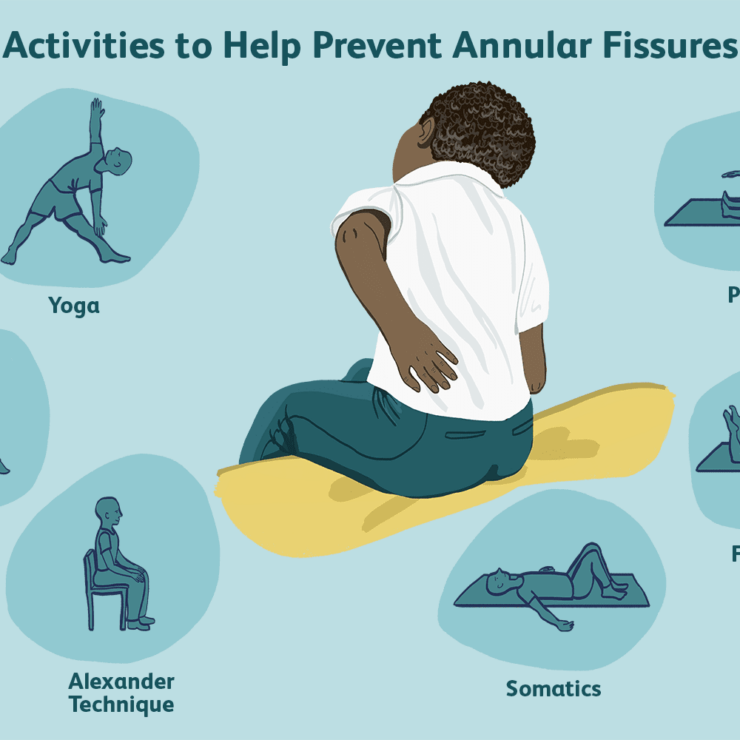Most adults experience back pain and discomfort, and the frequency of such problems increases as they age. It may range from simple complications like a pulled muscle to more severe ones such as an annular tear. Backaches are often unbearable, but pain management services help patients deal with the discomfort. Patients receiving physical therapy may also experience faster healing and avoid repetitive injuries.
An annular tear heals over time with the right care. Pain management services and exercises help maximize the chances of regaining full fitness. Exercises that help heal the annular tear can be tough to conduct alone. If wrongly done, they can worsen the complications, so it is advisable to find a pain management expert.

The Annular Tear Healing Process
Annular tears are injuries that occur to the intervertebral spinal discs. Discs found between each vertebrae cushion and support the spinal column. Each disc has an inner jelly-like substance (nucleus pulposus) embalmed in a tougher outer ring (annulus fibrosus). An annular tear develops when the tough outer ring’s tenacity is compromised.
How to Treat Annular Tears
Depending on the extent of the annular tear, it might demand a lifestyle change. The healing process involves conservative treatments that initiate gradual recovery over time.
Here’s a pain consultant’s overview of treatment methods when healing an annular tear.

Medication
Prescriptions are common in the early stages of treating an annular tear. NSAIDs like aspirin and naproxen help ease the pain and manage inflammation. Patients should buy such over-the-counter medication as per a physician’s recommendation. Doctors prescribe more potent painkillers for severe pain if the medicine does not work.
Conditioned Injections
Nerve root irritations cause swelling, which often accentuates the pain. An injection of cortisone solution directly into the spine relieves the painful inflammation. Conditioned injections depend on whether the annular tear is mild or severe. They offer the body short-term pain relief as the patient starts physical therapy.

Physical Therapy
Initial processes in conservative treatment manage the patient’s pain and help regain mobility. Once that’s done, annular tear healing can start with physical therapy. A pain consultant will recommend a physiotherapist to help during this rehabilitation phase.
Physiotherapy treatments focus on improving strength and back flexibility. They also promote spine support and coordination with the neck, leg, and core muscles. The location and size of the tear determine the degree of pain and symptoms they radiate. The patient needs a targeted treatment plan which is only possible when working with a pain consultant.
Core strengthening exercises eliminate the tension on the spine, which prevents further injuries. With time, one experiences relief from pain due to the annular tears. Therapy also improves posture while easing the body mechanics to avoid future injuries.
Physical Therapy Exercises for Treating Annular Tears
The annular tear heals itself by covering the torn area using scar tissues. Scar tissues don’t have the same integrity as original annular discs, since the fibers are weaker. Physical therapy eliminates the risk for another tear, but not all of them work to strengthen the tissues.

One’s body has to be systematically introduced to targeted exercises. Pain consultants recommend a range of exercises including the following:
- Stretching exercises like a hamstring stretch, shoulder blade squeeze, and chin tucks. These exercises mildly stretch the vertebral discs for better pain relief.
- Extension exercises for legs, arms, and upper back also help heal annular tears. Different variations of extensions are performed as the patient lays on their stomach. Extensions squeeze and stabilize back muscles to avoid spasms during the healing process.
- Flexibility exercises help with pain reduction and improve tensile muscle strength. Variations of Pilates and yoga fall into this bracket.
- Core muscle strengthening exercises like planks shift the stress from one’s back. A well-balanced and strong core makes annular tear healing faster.
- Posture correction exercises work on the body structure support. The therapist introduces wall sits or lunges at the treatment plan’s latter stages to improve posture.
Hire Pain Management Services to Aid With Recovery
An annular tear causes chronic pain coupled with a lengthy treatment process. Pain management services offer patients some relief from their discomfort for easier recovery. Contact a trusted pain consultant for more information on healing annular tears.

